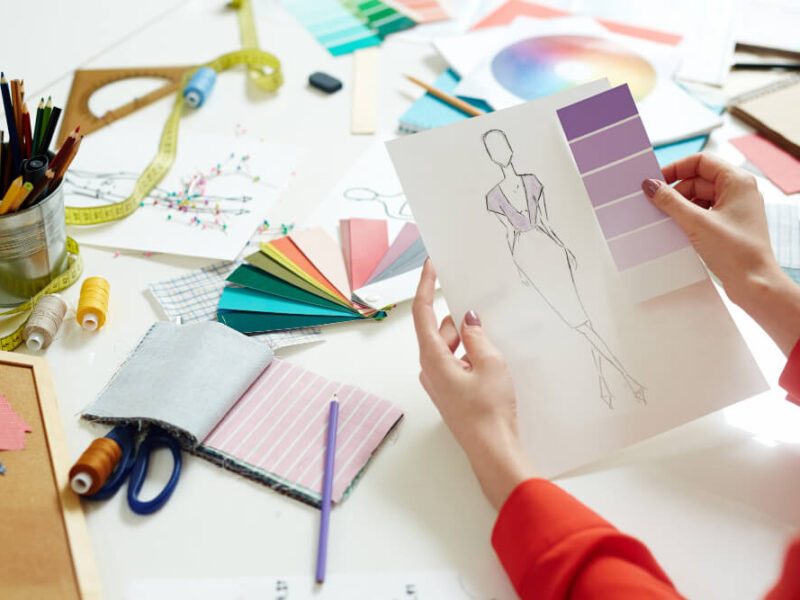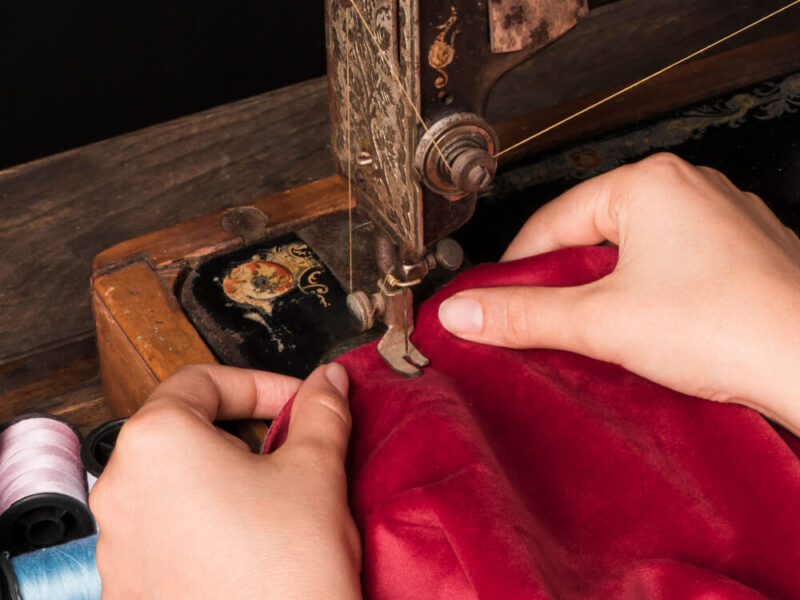Proportions, Mediums, Software in Illustration…
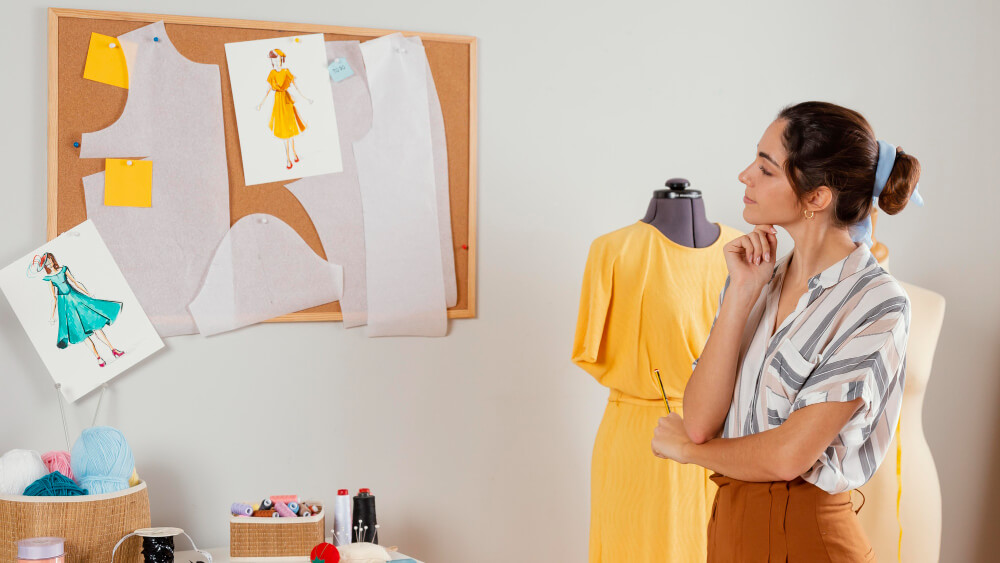
In Fashion Design, Illustration is an essential skill, shaping creative visions and product development. Illustration plays a crucial role in fashion design, helping designers visualise garments, proportions, textures, and colours before production. Let’s break down each aspect in detail.
1. Male and Female Proportions in Illustration
Fashion illustrations follow exaggerated proportions to highlight garments rather than natural human anatomy. Standard fashion figures are elongated, typically 9 heads tall to create an elegant silhouette.
A. Male Proportions
- Generally, broader shoulders, a defined chest, and narrower hips.
- 8-9 head proportion rule (total height equals 8-9 times the head size).
- Legs are slightly shorter than in female illustrations.
- Common poses: strong stance, confident posture, movement emphasizing structure.
B. Female Proportions
- Slender waist, longer legs, and graceful curves.
- 9-head proportion rule for an elongated aesthetic.
- More flexibility in poses to highlight draping and movement.
- Common poses: dynamic motion, soft posture, fluid fabric representation.
Real-Life Example:
Luxury fashion brands like Versace and Chanel use elongated proportions in sketches to create striking visual concepts.
2. Different Mediums of Colours in Illustration
Illustrators use various colour mediums, each bringing unique texture, vibrancy, and aesthetic appeal.
A. Traditional (Handmade) Color Mediums
- Watercolours – Used for soft, elegant shading and layering.
- Gouache – Provides opaque, vibrant colours ideal for dramatic fashion artwork.
- Alcohol-Based Markers (e.g., Copic, Prismacolor) – Great for sharp color application and shading.
- Colored Pencils – Best for textures and fabric detailing.
- Ink & Charcoal – Used for monochrome sketches and high-contrast fashion art.
- Acrylic Paints – Allows expressive textures, commonly used in avant-garde fashion sketches.
B. Digital Colour Mediums
- Vector Graphics – Provides clean, scalable images for fashion templates.
- Raster Painting – Allows realistic textures, mimicking handmade painting effects.
- Blending Tools & Effects – Used to smooth gradients and shadows.
- 3D Rendering Colours – Shows realistic fabric behavior, folds, and shadows.
Real-Life Example:
Illustrators at fashion houses like Dior and Gucci mix digital and traditional colour mediums to present fashion concepts.
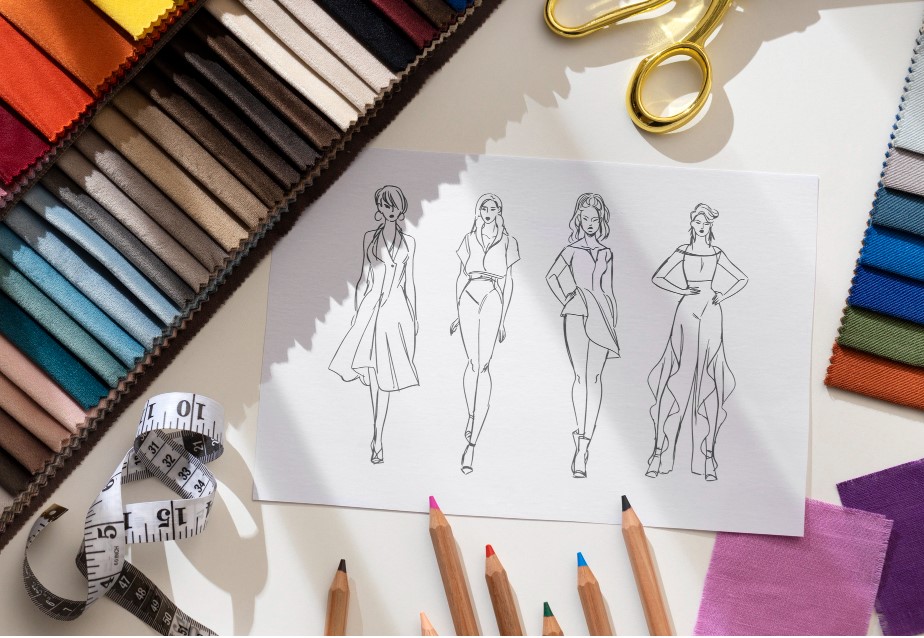
3. Handmade vs. Digital Illustration
A. Handmade Work
- Provides raw, artistic expression, great for couture sketches.
- Mediums like ink, charcoal, and watercolour allow freehand creativity.
- Often used in couture fashion, where brushstrokes create dramatic effects.
B. Digital Work
- Offers precision and easy corrections, commonly used for commercial fashion previews.
- Techniques like vector tracing create clean, scalable designs.
- Faster workflow for tech packs and industry-standard fashion design.
Real-Life Example:
Luxury fashion designers begin with handmade sketches before refining them digitally for production.
4. Software Used in Illustration
Fashion designers rely on various digital tools to create professional illustrations.
A. Popular Software for Fashion Illustration
- Adobe Illustrator – Best for vector-based fashion flat sketches.
- Adobe Photoshop – Ideal for painting and rendering textures realistically.
- CorelDRAW – Provides specialised fashion templates for technical designs.
- Procreate – A favourite iPad tool for hand-drawn digital sketches.
- CLO3D / Marvellous Designer – Advanced 3D fashion illustration software for garment visualisation.
- Autodesk Sketchbook – A user-friendly tool for quick concept sketches.
Real-Life Example in the Fashion Industry:
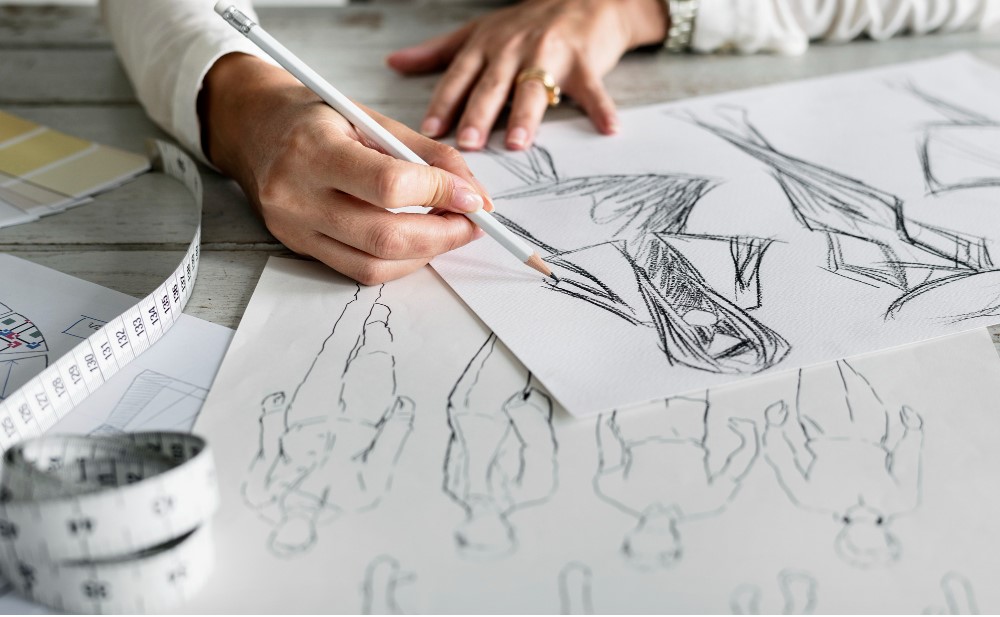
Brands like Balmain use Adobe Illustrator for fashion CAD designs, while CLO3D helps visualise garments in 3D.
1. Male and Female Proportions in Illustration
Fashion designers follow elongated proportions to create striking visuals.
A. Male Proportions
Example: Giorgio Armani’s Tailored Menswear
- Armani designs emphasize broad shoulders and structured silhouettes, following classic 8-9 head proportions.
- His suits use precise proportions to maintain a refined masculine aesthetic.
B. Female Proportions
Example: Valentino’s Runway Dresses
- Valentino’s 9-head fashion figures create elongated leg proportions.
- His couture gowns highlight fluid body curves, common in high-fashion sketches.
2. Different Mediums of Colours in Illustration
Illustrators use different techniques to bring their sketches to life.
A. Traditional (Handmade) Mediums
Example: Christian Dior’s Watercolour Sketches
- Dior’s early design sketches used watercolours to bring softness to luxurious gown illustrations.
Example: Fashion School Marker Renderings
- Copic and Prismacolor markers are widely used in fashion schools like Parsons or Central Saint Martins for bold shading techniques.
B. Digital Colour Mediums
Example: Gucci’s Digital Art Campaigns
- Gucci uses digital colour blending to create illustrations for ad campaigns and branding.
Example: Alexander McQueen’s Mixed Media Designs
- McQueen’s team combines digital layering with hand-painted textures to enhance artistic fashion sketches.
3. Handmade vs. Digital Illustration
Designers use both techniques depending on the concept.
A. Handmade Work
Example: Karl Lagerfeld’s Couture Sketches
- Lagerfeld hand-sketched all his designs, using ink and watercolour before sending them to the atelier for sewing.
B. Digital Work
Example: Nike’s Sneaker Designs
- Nike’s digital illustrators use CAD tools to refine sneaker concepts before mass production.
4. Software Used in Illustration
Digital tools help designers create professional, industry-standard fashion illustrations.
Example: Adobe Illustrator in Tech Packs
- Brands like Prada and Balmain use Adobe Illustrator to create flat sketches for technical garment specifications.
Example: CLO3D in Virtual Fashion
- Brands like Louis Vuitton and Tommy Hilfiger use CLO3D to visualise garments before producing samples.
“Fashion illustration combines tradition and modern technology to bring designs to life.”

